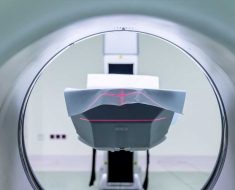In a recent study published in JAMA Network Open, researchers explored the association between severe acute respiratory syndrome coronavirus 2 (SARS-CoV-2) infections and new diagnoses of alcohol use disorder (AUD) in the two years since the onset of the coronavirus disease 2019 (COVID-19) pandemic.

Background
Alcohol use disorder has serious health-related and social impacts on the lives of the individual and those around them. AUD patients are at increased risk of various disorders involving the liver, cardiovascular system, gut, pancreas, immune system, brain, and musculoskeletal system.
Including factors such as medical care, loss of productivity, costs related to the criminal justice system, and accidents, the annual cost of AUD was estimated by the United States (U.S.) Centers for Disease Control and Prevention (CDC) to be close to 249 billion dollars in 2019, and studies have reported an increase in the risk of AUD after a COVID-19 diagnosis.
While the COVID-19 pandemic continues with the emergence of new SARS-CoV-2 variants, albeit with reduced severity and mortality rates, the change in the risk of new AUD diagnoses following SARS-CoV-2 infections remains unclear.
About the study
In the present study, the researchers conducted a retrospective cohort analysis of the deidentified electronic health records of individuals above the age of 12 obtained from the TriNetX Network, which contains data for over 60 million patients spanning 34 health organizations.
The study included 2,821,182 patients divided into the COVID-19 cohort comprising 1,201,082 patients who were diagnosed with COVID-19 and the other respiratory infections (ORI) cohort consisting of 1,620,100 patients diagnosed with other respiratory infections but with no prior COVID-19 history. Patients who died or had an encounter diagnosis of AUD before the follow-up analysis were excluded from the study.
To provide cohorts of sufficient size for the analysis, both COVID-19 and ORI patients were divided based on the initial infection time into eight individual cohorts, and the period between January 2020 and January 2022 was divided into three-month blocks of time. The COVID-19 cohort was defined by either a positive COVID-19 ribonucleic acid test result or an International Classification of Diseases, Tenth Revision (ICD-10) encounter diagnosis code for COVID-19.
The ORI cohort was defined based on an ICD-10 code for acute upper respiratory tract infections, pneumonia, influenza, or other acute infections of the lower respiratory tract. The sensitivity of the findings was tested using a control index event of bone fracture.
The two cohorts were matched on demographic characteristics, substance use disorders or a substance use history in the family, severe COVID-19 risk factors, mental health disorders, COVID-19 vaccination status, socioeconomic status, and hospitalization history. Self-reported race and ethnicity data were also used in the propensity score matching, as race and ethnicity are factors in COVID-19 severity and AUD prevalence.
Results
The results suggested a significant increase in the risk of new AUD diagnoses in the three months following a COVID-19 diagnosis, but the risk decreased to non-significant levels in the next three months. For two weeks to three months after COVID-19 diagnosis, there was a significant increase in the hazard ratio (2.53) for a new diagnosis of AUD among the COVID-19 cohort compared to the ORI cohort.
However, the results varied for the different time blocks, and the hazard ratio became non-significant for some of the blocks. For the blocks spanning January to April, and April to July 2021, the risk of AUD diagnosis after a SARS-CoV-2 infection increased, with hazard ratios of 1.3 and 1.8, respectively. From July 2021 to January 2022, the AUD diagnosis risk became non-significant. Furthermore, the results were similar when an encounter diagnosis of bone fracture was the index event in the control group.
The authors suggest that the variable increase in the risk of an AUD diagnosis after SARS-CoV-2 infection could be due to a combination of biological and social factors, including the social context of the pandemic, such as anxiety, fear, social isolation, stress, and other contextual factors, as well as the changing severity of COVID-19 and available treatments over time. Relaxing restrictions on travel and social interactions, availability of goods, reopening of schools and offices, and the gradual economic recovery could be contributing factors in decreasing AUD diagnosis risk.
Conclusions
Overall, the findings indicated that while the increased risk of AUD diagnosis in the three months following a SARS-CoV-2 infection suggests an association between AUD and COVID-19, the non-significant hazard ratios in the intervening time blocks imply that the new AUD diagnoses might be associated more with fear, stress, and anxiety experienced due to the drastic changes in circumstances during the pandemic.
Olaker, V. R., Kendall, E. K., Wang, C. X., Parran, T. V., Terebuh, P., Kaelber, D. C., Xu, R., & Davis, P. B. (2023). Association of Recent SARS-CoV-2 Infection With New-Onset Alcohol Use Disorder, January 2020 Through January 2022. JAMA Network Open. doi: https://doi.org/10.1001/jamanetworkopen.2022.55496
Posted in: Medical Science News | Medical Research News | Disease/Infection News
Tags: Alcohol, Anxiety, Bone, Brain, Coronavirus, Coronavirus Disease COVID-19, covid-19, Fracture, Immune System, Influenza, International Classification of Diseases, Liver, Mental Health, Mortality, Musculoskeletal, Pancreas, Pandemic, Pneumonia, Respiratory, Respiratory Tract Infections, Ribonucleic Acid, SARS, SARS-CoV-2, Severe Acute Respiratory, Severe Acute Respiratory Syndrome, Stress, Syndrome
.jpg)
Written by
Dr. Chinta Sidharthan
Chinta Sidharthan is a writer based in Bangalore, India. Her academic background is in evolutionary biology and genetics, and she has extensive experience in scientific research, teaching, science writing, and herpetology. Chinta holds a Ph.D. in evolutionary biology from the Indian Institute of Science and is passionate about science education, writing, animals, wildlife, and conservation. For her doctoral research, she explored the origins and diversification of blindsnakes in India, as a part of which she did extensive fieldwork in the jungles of southern India. She has received the Canadian Governor General’s bronze medal and Bangalore University gold medal for academic excellence and published her research in high-impact journals.
Source: Read Full Article





